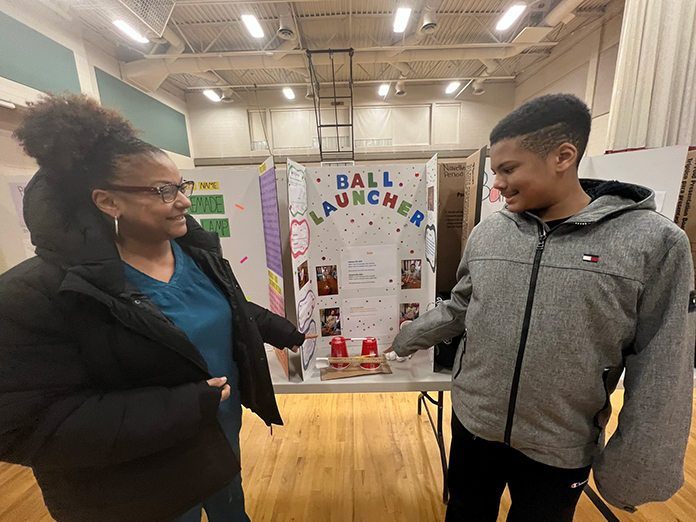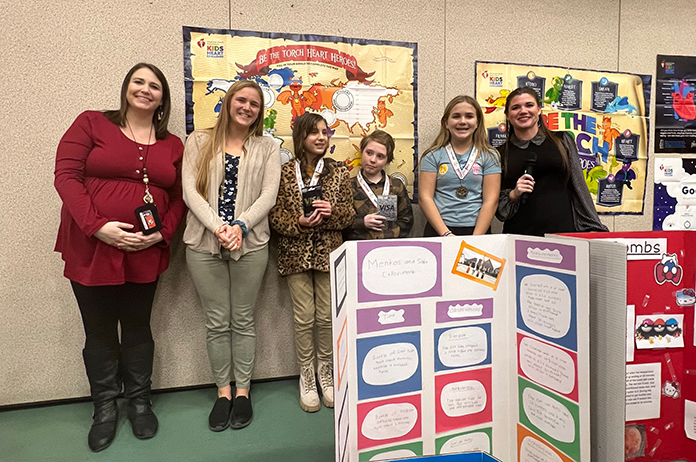
BARNEGAT – A Science Fair held at the Robert L. Horbelt Intermediate School demonstrated that some experiments come with predictable results.
In this case, students in the sixth grade classes showed they could introduce ingenious scientific theories, test them, and come to conclusions. If ever there were a hypothesis the teaching staff banked on proving – this alone produced the best experimental outcome.
“Our theme this year was experimental design,” shared Dr. Krystyne Kennedy, District Supervisor of Science and Technology. “The students all had to come up with their own experiment with an emphasis on picking an independent and dependent variable.”
This approach to the scientific method required students to design a question, make observations and take measurements as part of their experiment. They were also expected to predict results and evaluate their findings to draw conclusions.
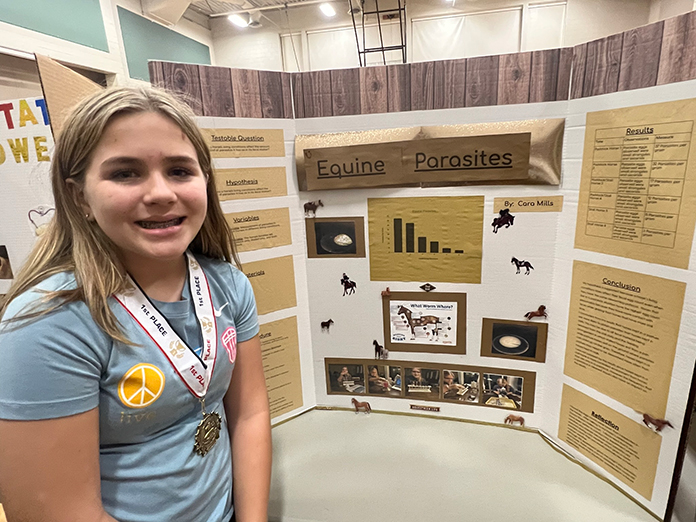
Based on the age of the participants, it wasn’t surprising that many of the 250 Science Fair projects on display involved some version of slime experimentation. A second favorite appeared to be applying the scientific method to melting ice.
Madelyn Maniscalco,12, decided to test the effects of salt, sugar, baking soda, sand, and baking powder on melting ice. She combined each of the ingredients in separate bowls of ice and timed how long it took to melt. Madelyn determined that her initial hypothesis was both correct and wrong at the same time.
“I believed that salt was going to melt the fastest,” explained Madelyn. “I also thought that room temperature would take the longest and it turned out that baking soda took the longest.”
Eleven-year-old Lucy O’Halloran took a scientific approach to determining if slime would act differently if she used shampoo to make it instead of glue.
Two weeks after she experimented with two different recipes, Lucy came to a conclusion.
“One stayed the same and the other got hard,” Lucy shared. “It was because of the shampoo.”
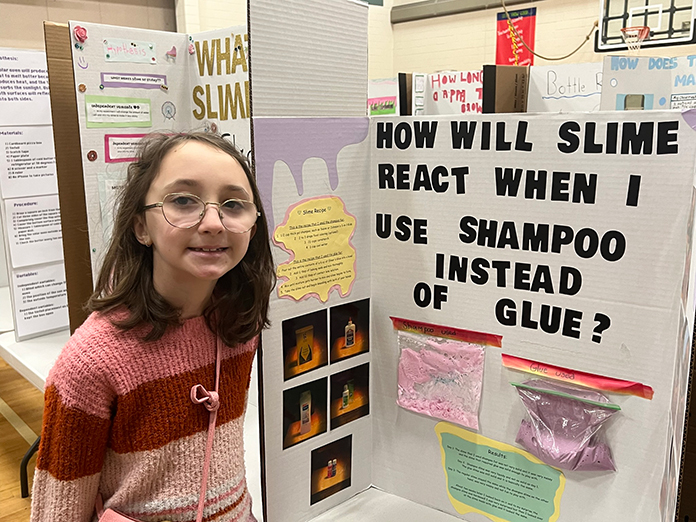
Students also had an opportunity to build their self-confidence and presentation skills as a result of the Science Fair. A teacher buzzing by Kyle Minor made sure to let his mom know he received a standing ovation when he explained his project to his entire class.
Kyle decided to create a ball launcher challenge and evaluated the differences between using a foil ball and a paper ball. Serena Minor watched as her son showed the basics of the project and immediately smiled.
“This is huge for him,” Serena shared. “I couldn’t be more proud.”
An overwhelming number of family members came to take in the Science Fair and it seemed clear that many were as excited about the projects as the students themselves.
Jack Odumbo, 11, named his project the “Battle of the Eggs” and decided to test the science of eggs floating in water. He used uncooked eggs and boiled eggs in salt water and tap water to test his theory that the density of salt made the weight heavier than the weight itself.
He learned something else – about his favorite part of the project.
“I really like drawing all kinds of illustrations,” said Jack, pointing to his display. “I made a place for all my data and my predictions and how the experiment turned out.”
Participants in the Science Fair became automatically eligible for a contest judged by a panel of five judges. The third place award went to Sara Mangum, whose project involved Decomposition of Different Materials. Second place winner was Landon Boardingham, who considered the issue of Life in a Closed Ecosystem.
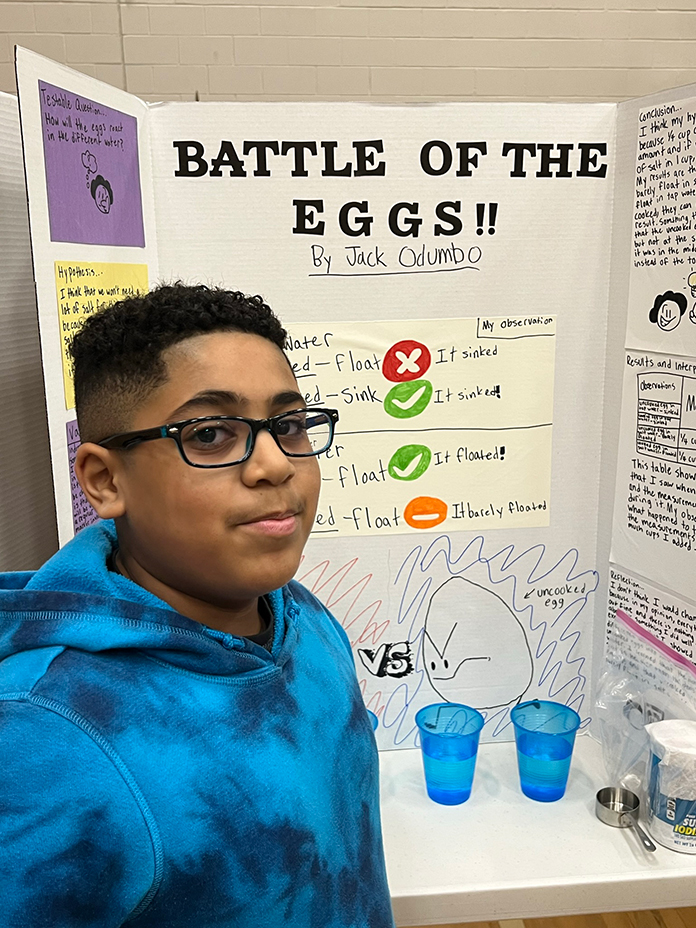
First place winner Cara Mills said her love for horses led her to consider the issue of Equine Parasites.
“I had to do the Wisconsin Sugar Flotation method to find out what parasites were in each of the horse’s fecal matter,” Cara explained. “I tested which horses’ living situation was better for them for their worm count.”
Cara said she determined stall horses had by far the least number of parasites when compared with paddock horses and paddock/stall horses.
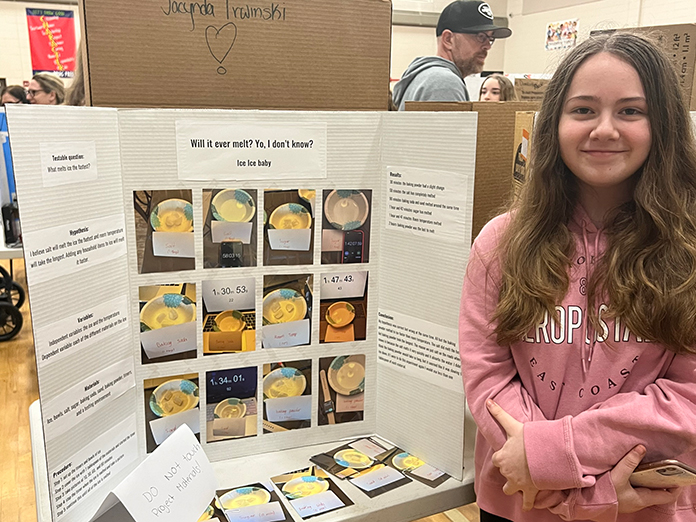
“I also figured out that I should have done this project in the light when it was warmer,” said Cara. “The eggs are more dormant in the winter.”
A love of science provides the perfect kickoff for Cara’s future aspirations. One day, when she’s a veterinarian, she may well remember her analysis of equine parasites and put the information to use.
